- Details
- Written by: DigiTrends4U.com
- Category: Health Care
When it comes to effectiveness of machine learning, more data almost always yields better results—and the healthcare sector is sitting on a data goldmine. McKinsey estimates that big data and machine learning in pharma and medicine could generate a value of up to $100B annually, based on better decision-making, optimized innovation, improved efficiency of research/clinical trials, and new tool creation for physicians, consumers, insurers, and regulators.
Where does all this data come from? If we could look at labeled data streams, we might see research and development (R&D); physicians and clinics; patients; caregivers; etc. The array of (at present) disparate origins is part of the issue in synchronizing this information and using it to improve healthcare infrastructure and treatments. Hence, the present-day core issue at the intersection of machine learning and healthcare: finding ways to effectively collect and use lots of different types of data for better analysis, prevention, and treatment of individuals.
Burgeoning applications of ML in pharma and medicine are glimmers of a potential future in which synchronicity of data, analysis, and innovation are an everyday reality.
- Details
- Written by: DigiTrends4U.com
- Category: Health Care
Abstract
Next generation sequencing (NGS), massively parallel or deep sequencing are related terms that describe a DNA sequencing technology which has revolutionised genomic research. Using NGS an entire human genome can be sequenced within a single day. In contrast, the previous Sanger sequencing technology, used to decipher the human genome, required over a decade to deliver the final draft. Although in genome research NGS has mostly superseded conventional Sanger sequencing, it has not yet translated into routine clinical practice. The aim of this article is to review the potential applications of NGS in paediatrics.
Read the full article in PMC - US National Library of Medicine National Institutes of Health website
- Details
- Written by: DigiTrends4U.com
- Category: Health Care
Gauging a patient’s recovery status is tricky if you don’t know what they should be expected to recover to. Researchers are using data collected from patient-worn sensors, such as Apple Watch or Fitbit, to build a "digital twin" of baseline patient health information.
A digital twin is essentially like creating a backup of a patient’s physical state before a procedure, so providers know what to look for a patient to work towards in recovery, said Dr. Mohamed Rehman, a professor and clinician at Johns Hopkins All Children’s Hospital, who will explain the concept in a session at HIMSS20 on March 11.
Currently, data points such as steps, heart rate, and hours of sleep are used to monitor patients in a variety of settings, but Rehman said there are greater capabilities on the horizon.
- Details
- Written by: DigiTrends4U.com
- Category: Health Care
As the cost of health care continues its relentless ascent, global health spending is expected to top $10 trillion by 2022, according to the Economist Intelligence Unit. Not surprisingly, payors, providers, life sciences companies and other members of the health care ecosystem are eagerly exploring ways to leverage emerging technologies to stem the rising costs and improve patient care. One such technology is digital twins, which incorporates Big Data, artificial intelligence (AI) and sensors to create virtual replicas of a physical object or process.
As a concept, digital twins is not new. Various industrial sectors such as aerospace and automotive have been using them for years to optimise the operation and maintenance of assets, systems and manufacturing processes. Across industries, the digital twins market is projected to zoom to almost $36 billion by 2025, up from about $3.8 billion currently, says research firm MarketsandMarkets. And among those jumping on the bandwagon are a growing array of health care organisations.
